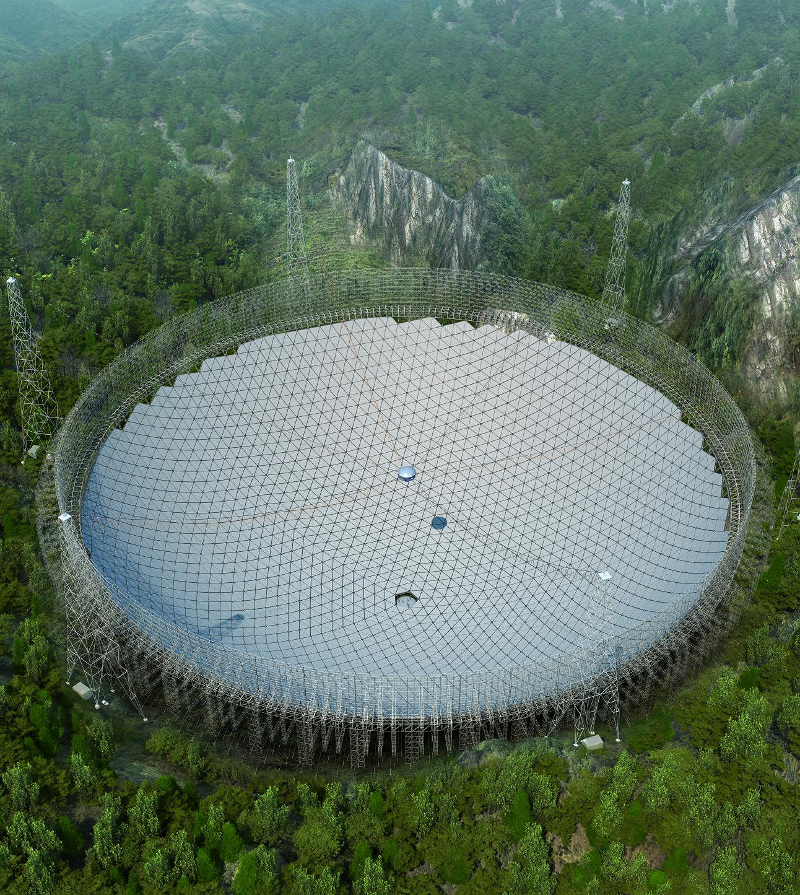China spies new space age

State media reports say China will soon use the giant dish to explore space in a new level of detail, aiding the hunt for new worlds and extraterrestrial life.
The 500-metre Aperture Spherical Telescope, dubbed ‘FAST’, has been carved out of the face of a mountain in the south-western province of Guizhou.
Scientists are now testing the new equipment, with a range of debugging and other tests planned in coming months.
Zheng Xiaonian, deputy head of the National Astronomical Observation under the Chinese Academy of Sciences, says the 1.2-billion yuan ($240 million) radio telescope will be a global leader for years.
The telescope took about five years to build and should begin operations in September.
China is keen to advance space program under President Xi Jinping, who wants the country to rise as the next great space power.
China's wants to put a person on the moon by 2036 and is building its own space station as well.
While many are excited to see another nation join the quest to learn about space, the United States is wary.
Earlier this year, the head of US Strategic Command Admiral Cecil Haney gave strong warnings about Russia and China’s growing space warfare capabilities.
“Once thought of as a sanctuary, space is more congested, contested, and competitive than ever, and it is becoming increasingly vulnerable,” he said.
“Other nations understand our reliance on space and the advantages we have reaped in defence and commercial sectors.
“Adversaries and potential adversaries want to exploit those dependencies by turning them into vulnerabilities.”
Admiral Haney said China and Russia are developing and demonstrating “disruptive and destructive counter-space capabilities.”
“Furthermore, they are exploiting what they perceive as space vulnerabilities – threatening the vital, national, civil, scientific, and economic benefits to the US and the global community.”








 Print
Print